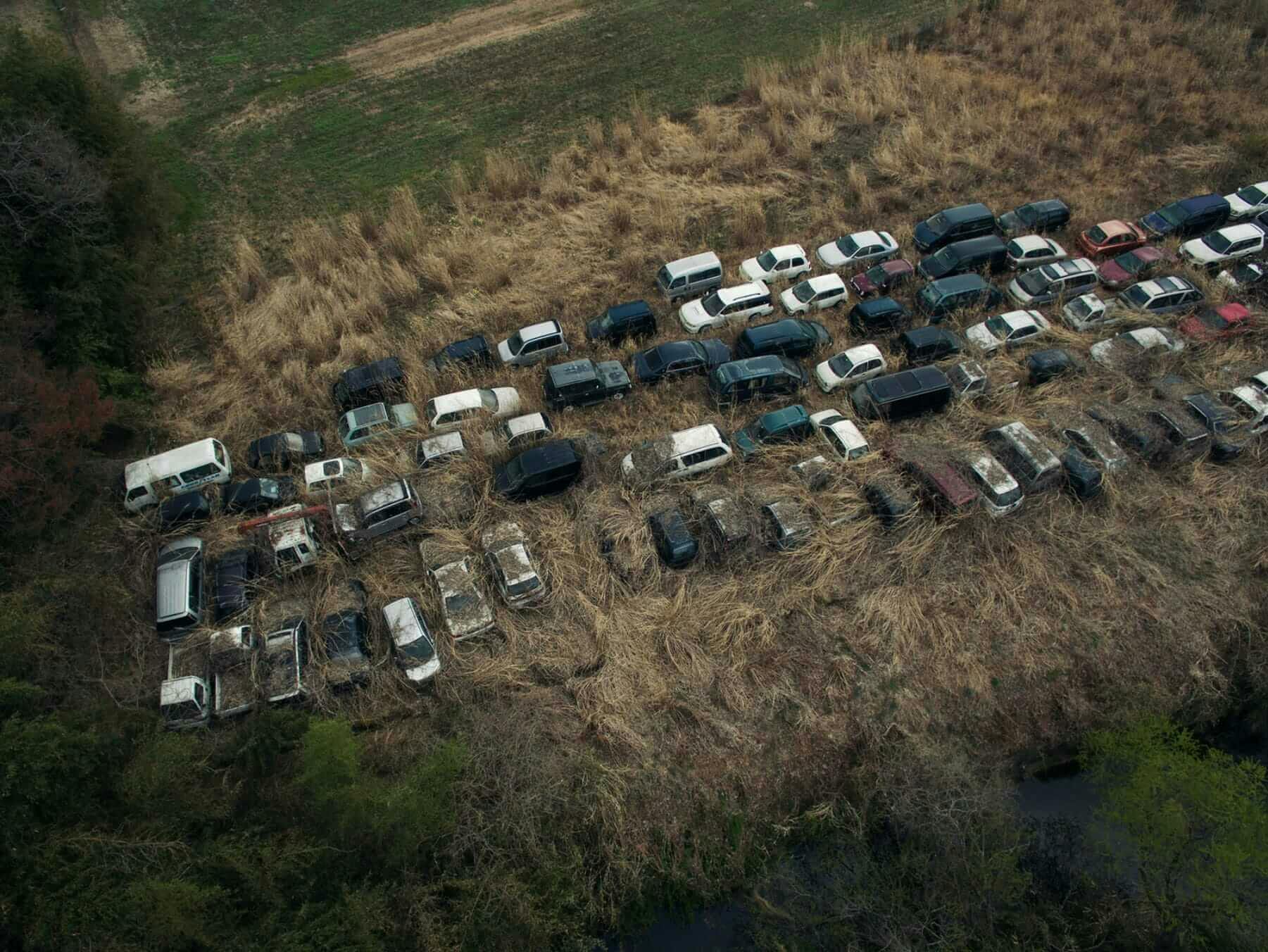The image captures six dozen ruined automobiles clustered at the edge of a field in irradiated Tomioka, probably tucked away below a bridge. The fragment of tilled land visible there makes for a striking contrast with the abandoned vehicles, overtaken as they are by an unruly host of tangled weeds. One car near the centre of the composition lurks nearly invisible, so utterly has it been consumed by overgrowth. A murky waterway lies nearby, but no people.
Waste is what societies typically wish to hide. Yet unwanted automobiles in Japan rarely meet such a fate. If not deemed saleable and exported to places like Africa and mainland Asia for afterlives as someone else’s everyday ride, Japanese vehicles are aggressively scavenged for parts or recycled. Even though approximately 230,000 cars and trucks were damaged or destroyed by the disasters of 3.11—left by tsunami waters atop multi-story buildings, standing on their noses in rock gardens, or scattered along the coast like misshapen bath toys—most of these have now been processed. It is, by and large, the radiation that still haunts areas of Fukushima that has condemned this odd agglomeration of automobiles to linger in material purgatory, more graveyard than parking lot, never quite reaching a promised future “normal.”
Much of the territory in and around the Exclusion Zone has been scraped and strimmed and raked up in order to reduce radiation readings, but much of north Tomioka remains a “Difficult-to-Return Zone,” meaning that communities cannot rebuild their interrupted lives there. Large portions of the zone have been relegated to so-called “natural decay,” meaning that the land is left completely relinquished, with real lives transitioning to half-lives. As the cars are slowly reclaimed by nature, they symbolise the disjunctures caused by radiation as people, and things, remain trapped “betwixt and between.”

